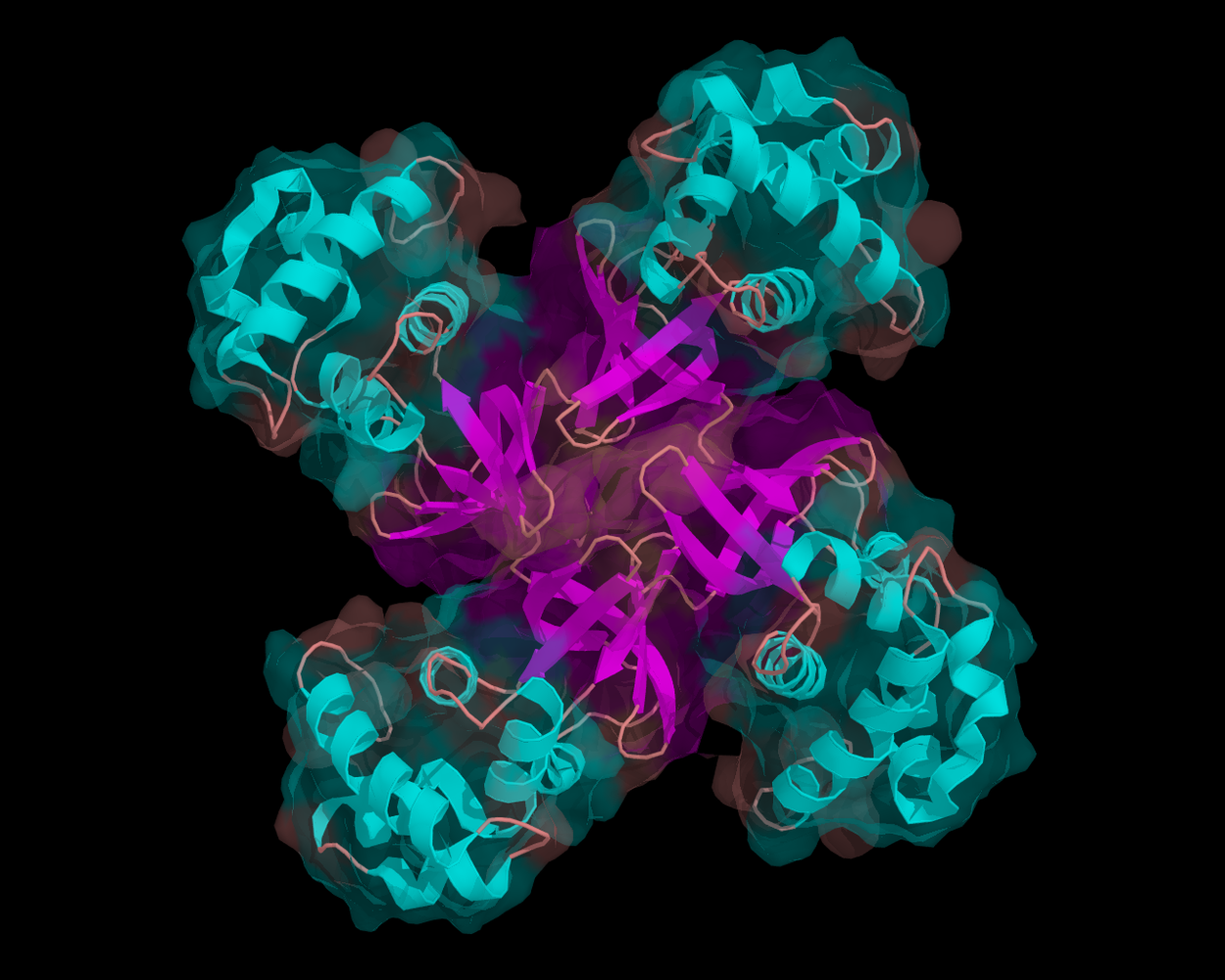Repairing our DNA
Interview with
Meera - Due to various factors such as UV in sunlight, our DNA is constantly being damaged and organisms need to repair that damage on a regular basis in order to survive. There are many proteins involved in this repair, one of which is XPD, a protein that Jim Naismith at the University of St Andrews has been looking into.
Jim Naismith - The protein that we studied is called XPD; it's a type of protein called a helicase, which means it unwinds the DNA double helix around damaged regions. That's one of the very first steps in repairing DNA once it's been damaged. 
Meera - If this protein for any reason becomes dysfunctional, what are the consequences?
Jim - In humans there are a number of diseases, the most famous, or infamous, is called Children of the Moon syndrome. These are children who have to be kept away from sunlight because they are unable to properly repair DNA damage. These children often develop cancers and fairly significant other illnesses. There's also other phenotypes [physical characteristics of the disease] to do with hair: you get brittle hair and you sometimes get deformities during development.
Meera - So what are the malfunctions that happen in these proteins that result in them not working, what happens in these diseases?
Jim - Well, you're unable to unwind the DNA and start the repair process. What we were able to show is that the mutations involved in one disease cluster in one particular part of the protein, while the mutations causing brittle hair cluster in a different section of the protein.
Meera - How have you set about looking at the structure of this XPD protein?
Jim - Humans are quite similar to bugs called archaea. There are 3 trees of life if you like; so, bacteria tree of life; the eukaryotic tree of life, which is us, or we're in that tree, and then there's a third branch called Archaea. Eukarya and Archaea are diverged later than split from bacteria, so what that means is that we're actually quite similar in some ways to these archaea organisms and one of the easy in which we are similar is in DNA repair. Now the human enzyme is extraordinarily difficult to work on, it's longer, bigger. The archaeal equivalent of XPD is much more tractable to biophysical methods and so we were able to clone that, purify it, crystallize it and determine the structure at the Diamond synchrotron. But the key residues that are mutated in the human disease can be mapped very easily on to the structure of the archaeal organism and in fact you can test those by biochemical methods to see if you can recapitulate defects in the protein.
Meera - So, having looked at the structure of this protein in the archaeal versions of the proteins, what have you found about the structure of this particular protein?
Jim - We've found that one set of mutations are clustered in what is called the ratchet. Helicases work by breaking down a molecule called ATP to provide energy, like fuel, and as they do so they 'drag' a duplex of DNA over and break it up into separate strands. We showed that one set of mutations exert their effect by working in this region, which is actually at the interface between two parts of the protein. The other set of mutations are distant from that; they affect the ability of the helicase to recruit other proteins into the cluster. In all organisms, but especially in higher organisms, such a complicated thing as DNA repair often requires multiple proteins working together, and you get these multi-protein complexes. The other set of mutations cluster exactly where you would predict other proteins to 'dock' (join the complex). Quite different biochemical phenotypes; one will activate helicase activity; and the other one the helicase activity is normal, but it stops the helicase from recruiting other proteins essential for DNA repair.
Meera - So there is a two-step process in this early stage of DNA repair?
Jim - Yes, and if you have the inability to unwind the DNA, you get the very severe illness, the cancer, the Children of The Moon. If you have the ability to unwind the DNA, but not to bring other proteins to the party, you get the other very severe, but not quite as severe, diseases like Brittle Hair. Brittle Hair, you think 'Oh, I can just live with that' but there are actually a lot of abnormalities to go with that which are significant.
Meera - So what has this structural insight provided in terms of really understanding the diseases?
Jim - So what this structure enabled us to do is segregate why one set of mutations caused a particular disease and why another set caused an apparently totally different disease. So that wasn't known, they couldn't segregate them before but with the structure you can. The fact that one of the pathways only affects the recruitment of other proteins and leads to a more subtle though still serious illness may help us disentangle the pathways that go wrong in DNA repair. So these mutations may allow us to see what other mechanisms are involved in DNA repair and in so doing could help with understanding cancer, where faults in DNA repair are often implicated.
Meera - Jim Naismith, Professor of chemical biology at the University of St Andrews.









Comments
Add a comment